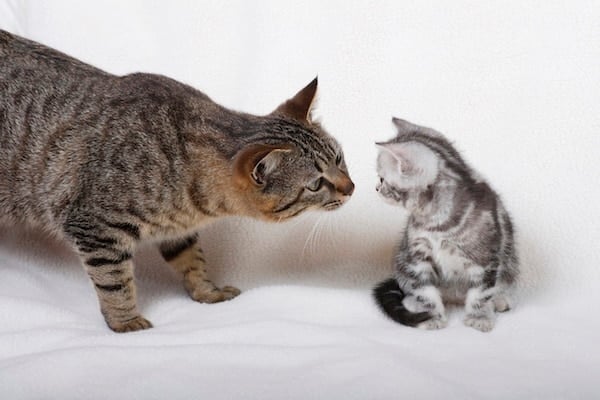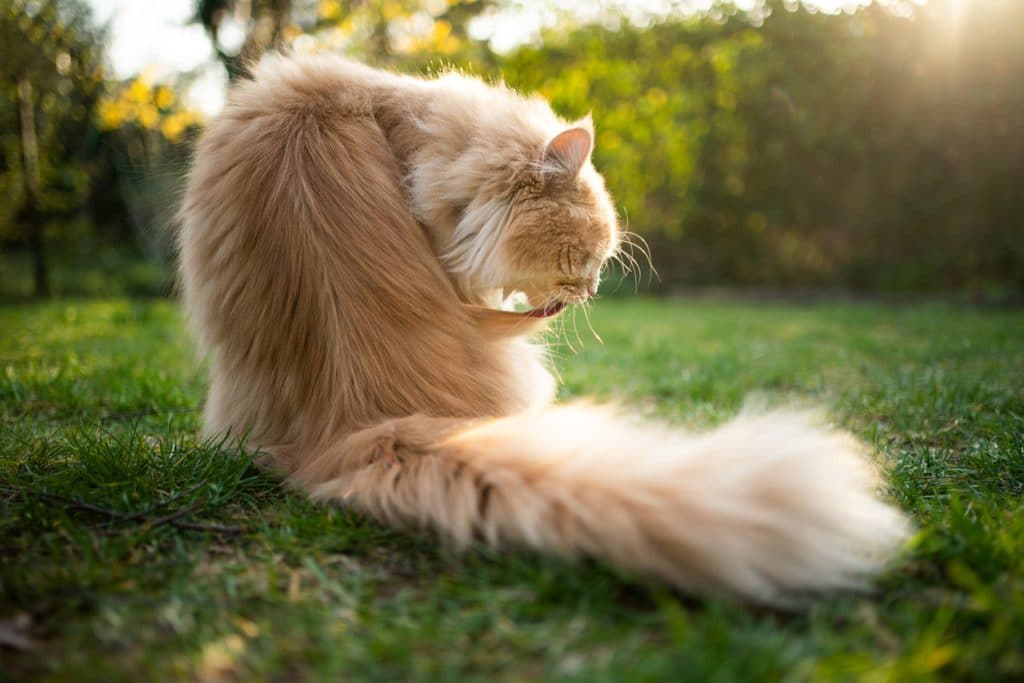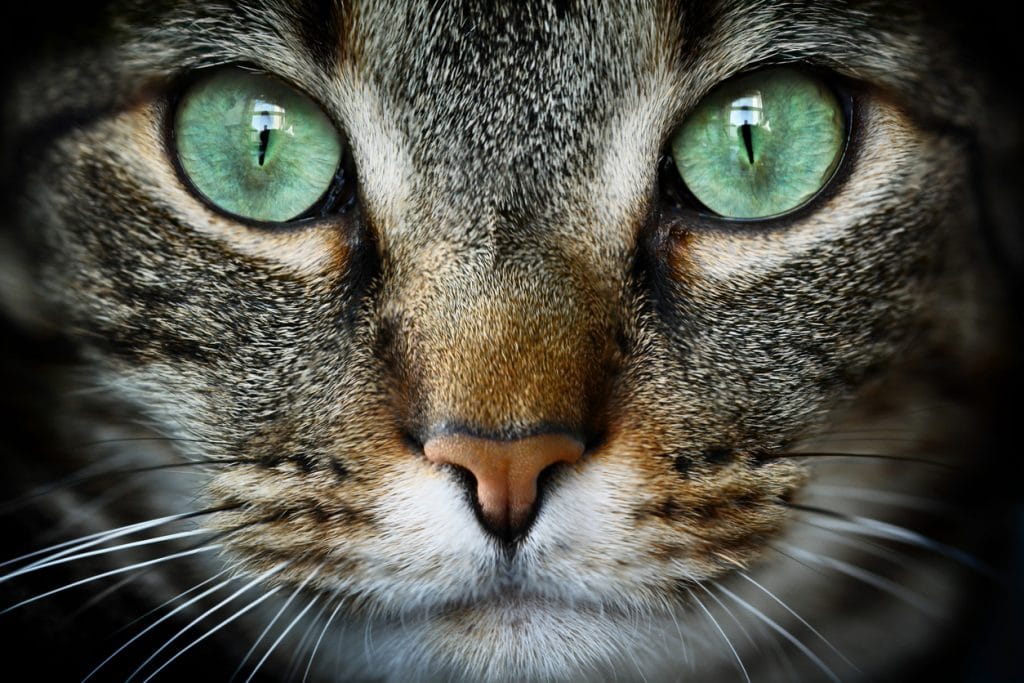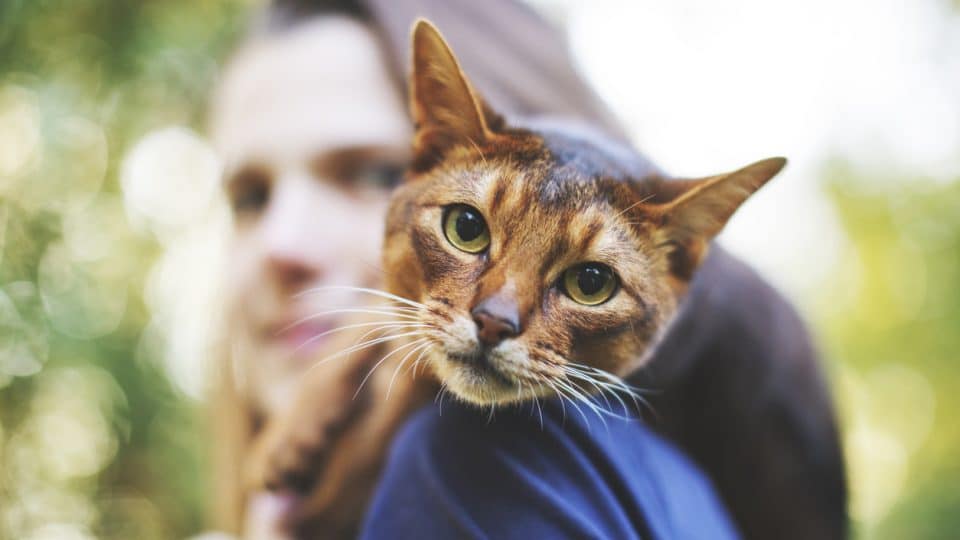- Not a substitute for professional veterinary help.
If you’ve ever wondered about your cat’s breed, you’re not alone. Unfortunately, there might not be a simple answer.
Most cats are mixed breed, so their genetic history can be tricky to untangle. Plus, feline registries like the Cat Fanciers Association (CFA) and the International Cat Association (TICA) don’t agree on the number of cat breeds that exist. The former only registers 45, while the latter recognizes 73.
The history of domestication adds another complicating factor. While humans played an active role in the selective breeding of dogs, cats were domesticated later and less intentionally. As a result, modern dog breeds are genetically distinct, while most cats remain genetically similar to their ancient ancestors.
Even if your cat’s origins may always be a bit of a mystery, knowing more about their breed makeup can be useful. We spoke to Dr. Hyun Han, a veterinarian at TelaVets, to learn how to tell what breed (or breeds) your cat is and how to use that knowledge to make more informed decisions about their care.
How To Identify Your Cat’s Breed
Given the sheer diversity of the feline world, you may have to do some detective work to identify your cat’s breeds.
Genetic testing
According to Dr. Han, because most cats in the U.S. are mixed breed, many look similar regardless of their genetic background. Genetic testing, he says, is the most accurate way to tell what kind of cat you have.
By analyzing a sample of your cat’s DNA, genetic tests can help narrow down the breed groups in your cat’s ancestry. Some tests can make more detailed inferences based on specific genetic markers.
Other methods
Other methods to help you find out what breed your cat is include:
- Visual clues
- Online quizzes
- Smartphone apps
- A vet consult
Visual clues like size or face shape aren’t definitive indicators of breed, but they can help you add or eliminate options from your cat’s potential breed makeup.
An online quiz that asks about visual clues and personality might get you another step closer. Apps like Cat Scanner do most of the work for you. All you have to do is upload a photo or video of your cat.
Finally, you can always ask your veterinarian for their opinion. As Dr. Han notes, however, breed information may carry less weight with veterinarians for cats than dogs.
“Most cats are considered domestic shorthairs or domestic longhairs,” he says, “but if a cat shows strong physical traits linked to a specific breed, we take that into account when considering possible health risks or behavior issues.”
Size and Weight
| Cat Size | Cat Weight | Cat Breed |
| Small cats | <9 pounds | American Curl, Balinese, Bambino, Cornish Rex, Devon Rex, Japanese, Munchkin, Singapura |
| Medium-sized cats | 9-15 pounds | American Shorthair, American Wirehair, Bombay, Burmese, Chartreux, Korat, Manx, Ocicat, Persian, Russian Blue, Scottish Fold, Siamese, Sphynx |
| Large cats | 15+ pounds | Bengal, Chausie, Maine Coon, Norwegian Forest Cat, Ragamuffin, Ragdoll, Savannah Cat, Siberian |
According to the Association for Pet Obesity Prevention, the average domestic cat weighs 8-10 pounds. A lot of cats fall into that medium range, between 9 and 15 pounds—which means it isn’t a very helpful indicator of breed.
For cats at the extremes, however, size is a great clue. For example, large breeds like the Maine Coon, Siberian, and Ragamuffin weigh over 15 pounds at maturity. Small cat breeds like the Singapura, Munchkin, and Napoleon weigh less than 9 pounds.

gyro via iStock
Face Shape
| Cat Face Shape | Cat Breed |
| Flat face | British Longhair, British Shorthair, Burmese, Exotic Shorthair, Himalayan, Munchkin, Persian, Scottish Fold, Selkirk Rex |
| Narrow face | Abyssinian, Cornish Rex, Siamese, Sphynx |
Though face shape alone can’t tell you what breed your cat is, it can certainly help.
If your cat has a flat face, for example, they might be part Persian or Himalayan. These beloved brachycephalic cats were developed through selective breeding aimed at enhancing aesthetic traits—but at the cost of an increased risk for breathing issues and eye problems.
Narrow-faced cats, by contrast, have angular faces with prominent cheekbones and large ears. Examples include Siamese, Abyssinian, Cornish Rex, and Sphynx breeds.
Most cats, however, have a fairly standard head shape, like the American Shorthair—though you might see small variations like the full, puffy cheeks of the British Shorthair.
Ear Shape
| Cat Ear Type | Cat Breed |
| Curled ears | American Curl, Elf, Highlander |
| Folded ears | Foldex, Scottish Fold, Ukrainian Levkoy |
| Tufted Ears | American Lynx, LaPerm, Maine Coon, Norwegian Forest Cat, Pixie Bob, Ragdoll, Siberian, Turkish Van |
Most cats have cup-shaped ears that either come to a point or are rounded at the tips. There are, however, some distinctive breed-specific ears out there. Cat breeds with unique ear shapes fall into three categories:
- Curled
- Folded
- Tufted
Cats with curled ears like the American Curl, Highlander, and Elf have ears that curl backward, away from their faces, in an arch shape. Folded ears—like those of the Scottish Fold, Highland Fold, and Ukrainian Levkoy—fold forward, lying close to the head. Tufted ear breeds like the Maine Coon, Ragdoll, and Turkish Van grow long tufts of fur from the tips of their ears.
Both curled and folded ears can be tricky for cats to keep clean, which may lead to an increased risk of ear infections. In some cases, as with the Scottish Fold, ear shape is linked to a genetic mutation which may contribute to other health issues.
Tail Length
In many cases, your cat’s tail isn’t going to tell you much about their breed. The exception is cats with short, bobbed, or absent tails. Short tails are caused by a genetic mutation that occurs naturally or as the result of selective breeding.
Examples of cat breeds with short tails include:
- American Bobtail
- American Lynx
- Cymric
- Highlander
- Japanese Bobtail
- Kurilian Bobtail
- Manx
- Mekong Bobtail
- Pixie-Bob
Short tails in cats come in several forms. The American Bobtail’s tail is short and stump-like, while the Japanese Bobtail’s tail is short and curled. Kurilian Bobtails have short, bushy tails, while Manx cats are sometimes born with no tail at all.
A few cats even have kinked or curly tails. The American Ringtail (not currently recognized by all registries) is the only breed developed specifically for a tail that curls up over the back like a question mark. And though rare, kittens of any breed can be born with curly tails due to genetic mutations.
Fur Length and Type
| Cat Hair Length/Type | Cat Breed |
| Long hair | Birman, Himalayan, Japanese Bobtail, Maine Coon, Norwegian Forest Cat, Persian, Ragamuffin, Siberian, Turkish Angora, Turkish Van |
| Short hair | Abyssinian, American Shorthair, Bengal, Bombay, Exotic Shorthair, Manx, Ocicat, Russian Blue, Savannah Cat, Siamese |
| Curly hair | American Wirehair, Cornish Rex, Devon Rex, LaPerm, Selkirk Rex |
| No hair | Bambino, Elf, Donskoy, Peterbald, Sphynx |
The length and texture of your cat’s coat can rule out a lot of possible breeds. That’s because in cats, long hair is the result of a recessive gene, so it’s a more valuable indicator of breed than short hair. Curly coat texture and hairlessness are strong clues as well, since they’re caused by genetic mutations specific to a limited number of breeds.
Not sure what counts as long, short, or curly? Here’s a quick breakdown:
- Long hair. Fur length ranges from 1.5 to 6 inches. Longhaired cats often exhibit fluffy tails, tufts on the ears and toes, or a mane-like ruff around the neck.
- Short hair. Fur length under 1.5 inches. Shorthaired cats often have a sleek, smooth texture to their coats, though some breeds are more plush than others.
- Curly hair. Most cats have straight hair, but some breeds (particularly Rex breeds) have textured coats that range from gentle waves to tight ringlets.
- No hair. Even within so-called hairless breeds, some cats are completely bald while others have very fine, downy coats.

iStock/Nils Jacobi
Coat Color and Pattern
| Cat Coat Color or Pattern | Cat Breed |
| Solid color | Bombay, Chartreux, Korat, Persian, Russian Blue, Siberian |
| Bi-color | American Shorthair, British Shorthair, Cornish Rex, Cymric, Exotic Shorthair, Japanese Bobtail, Maine Coon, Manx, Turkish Van, Snowshoe |
| Tortoiseshell | American Shorthair, British Shorthair, Cornish Rex, Japanese Bobtail, Maine Coon, Ragamuffin |
| Calico | American Shorthair, Arabian Mau, Cornish Rex, Devon Rex, Japanese Bobtail, Manx, Maine Coon, Norwegian Forest Cat, Scottish Fold, Turkish Angora |
| Colorpoint | Balinese, Birman, Himalayan, Javanese, Ragdoll, Siamese, Snowshoe, Tonkinese |
Cats exhibit a lot of variation in coat color and pattern, many of which are shared across breeds. So if you’re wondering what breed your black, grey, or orange cat is, coat color alone might not be conclusive.
Even distinct patterns and markings like calico, tabby, or tortoiseshell won’t necessarily help you narrow down your cat’s breed makeup. But some coat characteristics are more closely associated with certain breeds than others. Here are some examples:
- Solid color. One consistent color throughout the coat, sometimes with white markings covering under 25% of the coat. Common in Bombay, Persian, and Russian Blue cats.
- Bi-color. At least one-third of the coat is white and the rest another color (with or without pattern or tabby markings). Common in Cornish Rex, Exotic Shorthair, and Snowshoe cats.
- Tortoiseshell. A mix of two colors that are mottled together across the entire coat in an asymmetrical pattern. Common in American Shorthair, British Shorthair, and Ragamuffin cats.
- Calico. Pattern made up of large, irregular patches of three colors: white, black, and orange. Common in American Shorthair, Cornish Rex, and Maine Coon cats.
- Colorpoint. Typically a light-colored coat with darker areas of color (points) on the extremities, including the head, tail and feet. Common in Siamese, Balinese, Himalayan cats.
Eyes
The most common eye colors for cats are yellow (gold), orange, green, and blue. Kittens are born with blue eyes, but their color often changes between 2 and 4 months of age. As kittens grow, their bodies produce more melanin (pigment), which can affect eye color.
Eye color is most helpful as a breed indicator for cats with blue eyes or two different-colored eyes (called heterochromia). Either situation suggests the presence of a gene which prevents pigment from changing a developing kitten’s eye color.
Blue eyes and heterochromia are usually seen in breeds that commonly exhibit white coats like the Persian, Siamese, and Turkish Angora.
Here’s a list of cat breeds prone to heterochromia:
- British Shorthair
- Cornish Rex
- Devon Rex
- Khao Manee
- Japanese Bobtail
- Munchkin
- Persian
- Siamese
- Sphynx
- Turkish Angora
- Turkish Van

iStock/nico_blue
Behavior and Personality
Though cats aren’t bred for personality to the same extent as dogs, Dr. Han notes that some breeds have earned a reputation for being more vocal, more active, or more independent than others.
Here are some examples of breeds known for displaying certain personality traits:
- Sociable. Often described as dog-like, breeds known for their loyalty, trainability, and affectionate natures include Abyssinians, Ragdolls, Maine Coons, and Burmese cats.
- Independent. Cat breeds like the British Shorthair, Russian Blue, Scottish Fold, and Persian tend to be self-sufficient. They don’t crave constant attention.
- Vocal. Breeds that tend to meow a lot (or have a distinctive style of vocalization) include Siamese, Oriental Shorthair, Balinese, and Sphynx cats.
- Active. High-energy breeds that have a love for interactive play (and a propensity for getting into trouble when they don’t get enough exercise) include Bengals, Siberians, Japanese Bobtails, and Somali cats.
- Lazy. Some cat breeds known for being low-energy and suitable for smaller homes include American Shorthair, Scottish Fold, Birman, and Himalayan cats.
Breed-linked personality traits like these are largely supported by anecdotal evidence—but limited studies have identified trends in social and non-social behaviors within certain breeds.
A 2019 study in Scientific Reports found Korat and Devon Rex cats to be the most likely to seek contact with people. British Shorthairs and Birmans, on the other hand, kept to themselves. In terms of aggression toward other cats, Turkish Vans rated high for their probability of aggression, while Persians and Cornish Rex cats rated low.
Because personality isn’t deeply tied to breed, your cat’s individual quirks might not tell you much about their ancestry. Still, learning more about your cat’s breed can be useful. As Dr. Han explains, “Knowing your cat’s breed can give you some clues about their behavior, grooming needs, and possible health risks.”



